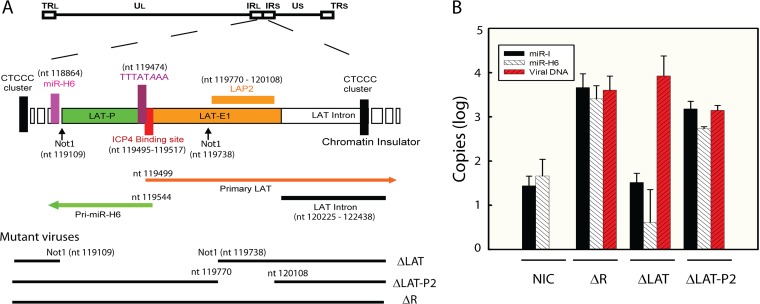FIG 5.
HSV-2 LAP2 region is not essential for miR-H6 expression during latency. (A) Diagram of HSV-2 LAT region and mutant viruses used in panel B. ΔLAT-P2 is a LAP2 deletion mutant. ΔLAT is a NotI-NotI LAT promoter deletion mutant. (B) Expression of both miR-I and miR-H6 are abolished in mice ganglia latently infected with ΔLAT but not ΔLAT-P2. TG from mice infected with ΔLAT (n = 12), its rescuant ΔR (n = 12), and ΔLAP-P2 (n = 12) were extracted after 21 days postinoculation. Mice (n = 12) inoculated with plain medium were used as no-infection controls (NIC). Six mouse TG from three mice of each group were pooled, and each group thus contained four pooled TG samples. The error bar represents the standard deviations of four pooled samples in each group (each containing six ganglia from three mice). Total RNA and DNA were prepared from these pooled TG. The positive result for miR-I and miR-H6 (at ∼60 copies, with an upper 95% confidence interval of ∼100 copies) reflects the assay background in mouse TG.

